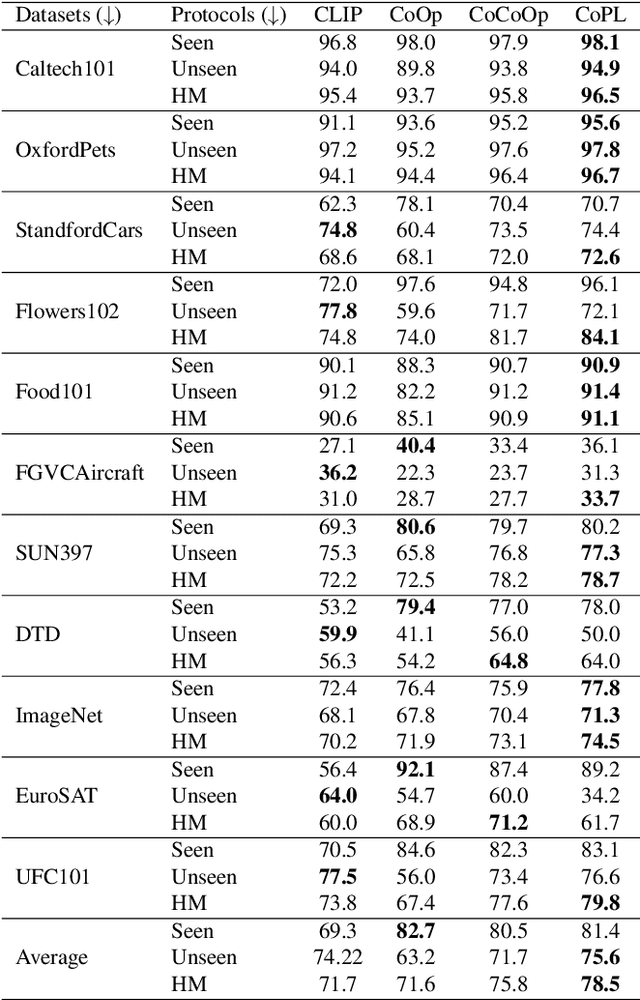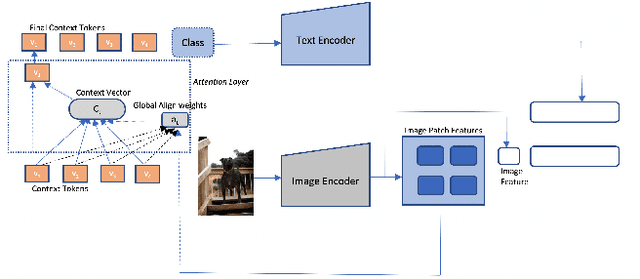Contextual Prompt Learning for Vision-Language Understanding
Paper and Code
Jul 03, 2023



Recent advances in multimodal learning has resulted in powerful vision-language models, whose representations are generalizable across a variety of downstream tasks. Recently, their generalizability has been further extended by incorporating trainable prompts, borrowed from the natural language processing literature. While such prompt learning techniques have shown impressive results, we identify that these prompts are trained based on global image features which limits itself in two aspects: First, by using global features, these prompts could be focusing less on the discriminative foreground image, resulting in poor generalization to various out-of-distribution test cases. Second, existing work weights all prompts equally whereas our intuition is that these prompts are more specific to the type of the image. We address these issues with as part of our proposed Contextual Prompt Learning (CoPL) framework, capable of aligning the prompts to the localized features of the image. Our key innovations over earlier works include using local image features as part of the prompt learning process, and more crucially, learning to weight these prompts based on local features that are appropriate for the task at hand. This gives us dynamic prompts that are both aligned to local image features as well as aware of local contextual relationships. Our extensive set of experiments on a variety of standard and few-shot datasets show that our method produces substantially improved performance when compared to the current state of the art methods. We also demonstrate both few-shot and out-of-distribution performance to establish the utility of learning dynamic prompts that are aligned to local image features.
 Add to Chrome
Add to Chrome Add to Firefox
Add to Firefox Add to Edge
Add to Edge